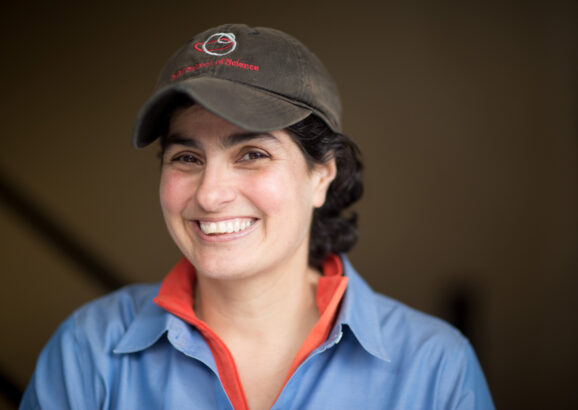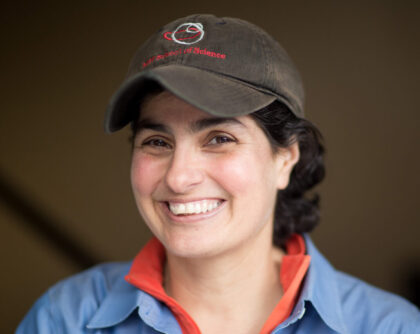Nergis Mavalvala PhD '97
Dean, MIT School of Science
Research Interests
Nergis Mavalvala, Marble Professor of Astrophysics at MIT and a 2010 recipient of a MacArthur “genius” award, is a physicist whose research focuses on the detection of gravitational waves and quantum measurement science. She is a longtime member of the scientific team that announced in 2016 the first direct detection of gravitational waves from colliding black holes by the Laser Interferometer Gravitational-wave Observatory (LIGO). The gravitational waves that LIGO detected are ripples in the spacetime fabric caused by the motion of compact, massive astrophysical objects such as black holes and neutron stars. Since the nature of gravitation is inherently different from electromagnetism, gravitational wave astrophysics provides a radically different window into the universe.
In the quest for ever greater sensitivity in the LIGO detectors, Mavalvala has also conducted pioneering experiments on generation and application of squeezed states of light, and on laser cooling and trapping of macroscopic objects to enable observation of quantum phenomena in human-scale systems.
We think that when we make a discovery, we’ve answered a question; but almost always what we’ve done is pose a new question.
Nergis Mavalvala
Biographical Sketch
Professor Nergis Mavalvala received a B.A. from Wellesley College and a Ph.D. from MIT. She was a postdoctoral fellow and research scientist at the California Institute of Technology before joining the Physics faculty at MIT in 2002. She was appointed Associate Department Head of Physics in February 2015, overseeing the department’s academic programming and student well-being for the next five years. She was elected to the National Academy of Sciences in 2017. In 2020, Nergis was named Dean of MIT’s School of Science.

Nergis Mavalvala named School of Science dean
Astrophysicist and associate head of the physics department will succeed Michael Sipser.
Awards & Honors
- 2022 // ERC Synergy Grant (Gravitational interferometry with entangled states in optical fibers)
- 2018 // WINGS Air & Space Award
- 2017 // National Academy of Sciences Member
- 2017 // Carnegie Corporation's Great Immigrants Award
- 2017 // Lahore Technology Award
- 2016 // Gruber Cosmology Prize (awarded to The LIGO Discovery Team) "for the first detection of gravitational waves."
- 2015 // Special Breakthrough Prize in Fundamental Physics (as part of the LIGO team)
- 2014 // LGBTQ Scientist of the Year
- 2013 // Optical Society of America Fellow
- 2013 // Joseph F. Keithley Award for Advances in Measurement Science "For seminal contributions to the development and application of quantum metrological methods, in particular of squeezed light sources and optical springs, enabling sensitive measurements beyond the standard quantum limit."
- 2012 // MIT School of Science Prize for Excellence in Undergraduate Teaching
- 2010 // MacArthur Fellowship
- 2010 // American Physical Society Fellow (APS) "For her contributions to the design and commissioning of LIGO, and for experimental exploration of the fundamental quantum limits of interferometric gravitational wave detectors."
- 2007 // Edgerton Award for Faculty Achievement (MIT)
- 2006 // John de Laeter Medal, Australian Institute of Physics
- 2005 // Sloan Research Fellowship
- 2003 // Appointed Cecil and Ida Green Career Development Professorship (MIT)
- 1990 // Phyllis Fleming Award for Excellence in Physics, Wellesley College
Key Publications
-
“Measurement of radiation-pressure-induced optomechanical dynamics in a suspended Fabry-Perot cavity,” T. Corbitt, D. Ottaway, E. Innerhofer, J. Pelc, and N. Mavalvala, Phys. Rev. A 74, 021802 (2006).
-
“A squeezed state source using radiation pressure induced rigidity,” T. Corbitt, Y. Chen, F. Khalili, D. Ottaway, S. Vyatchanin, S. Whitcomb, and N. Mavalvala, Phys. Rev. A 73, 023801 (2006).
-
“Lock acquisition of a gravitational wave interferometer,” M. Evans, N. Mavalvala, P. Fritschel, R. Bork, B. Bhawal, R. Gustafson, W. Kells, M. Landry, D. Sigg, R. Weiss, S. Whitcomb, H. Yamamoto, accepted for publication in Opt. Lett. (2002).
